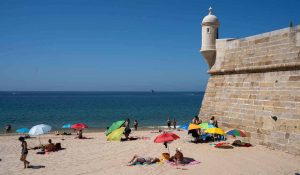You’ll find stacks of advice on the internet covering what to wear in Portugal, but few are written by people who actually live there. I’ve been based in Portugal since 2018, living through every month and season many times over, so I can tell you exactly what to expect in spring or summer and the differences between each month.
This isn’t a Portugal packing guide subtly trying to sell you a travel kettle, flashlight or packing cubes – I want to offer up genuine, practical advice so you’ll have a better idea of the climate, how locals dress, and what you might need. First, I’ll share some general tips on what to wear in Portugal, then we’ll dive into a month-by-month weather breakdown before I share a basic Portugal packing list (to get you started!) and answer FAQs.
To keep this real, I’ll share pictures of myself or my partner Jorge for some Portugal travel outfit ideas too. Vamos.
Contents
ToggleTop packing tips for Portugal
- Pack practical shoes only! – Forget heels, focus on good grip. I’ll explain in detail below.
- Activewear is for the gym – Like other European cities, locals wear activewear to do sport, hike or workout, but not to explore a city. Wear pants or shorts instead of tights (though, at the same time, no one will shame you or say anything if you do).
- Houses are poorly insulated – In winter, it’s often warmer outside than in. If you’re in a shiny new hotel, you’ll have heating and aircon, but if you rent a room or apartment, you might have single-pane windows and walls that just feel cold.
- It’s often windy at coastal towns and cities – Don’t bring short, floaty skirts or dresses. Go for midi or maxi, or more slimline or A-line cuts, if you don’t want your hem around your ears.
- You’ll need a light jacket in summer – The dry summer days give way to cool evenings. My Lisbon theory is that if the day is warmer than 32°C (90°F), then you won’t need a jacket after dark. Otherwise, if I’m out all day until after sunset, I (annoyingly) carry a linen shirt, denim jacket or light sweater around in the heat.
- Layers are your best friend – On the above note, the cool Atlantic Ocean can shift temperatures quite drastically from day to day, so pack layers that give you options to adapt.
What are the locals wearing in Portugal? What’s the street style vibe?
Maybe you’ve seen the “Portuguese girlie” trend on TikTok or Instagram. The truth is that those Portuguese fashion IT girls dress far crazier than what the average person is wearing. I find Portugal – even in the middle of the cities – tends to be very casual. People mostly dress not to stand out – think muted tones, lots of jeans and t-shirt combos with sneakers. Practical, comfortable and smart casual is how I’d describe true Portuguese style.
➡️ You don’t need new clothes for Portugal. I’m a sustainable fashion advocate and am passionate about sharing guides to things Made in Portugal – so let’s deinfluence the idea that you need a whole new wardrobe for your vacation. You have lovely things in your cupboards, I know it.
If you want to shop cool stores in Portugal, check out this guide to Lisbon shopping guide to the best sustainable stores & boutiques, or go vintage shopping – I have vintage guides for Lisbon and Porto.
What to wear in Porto
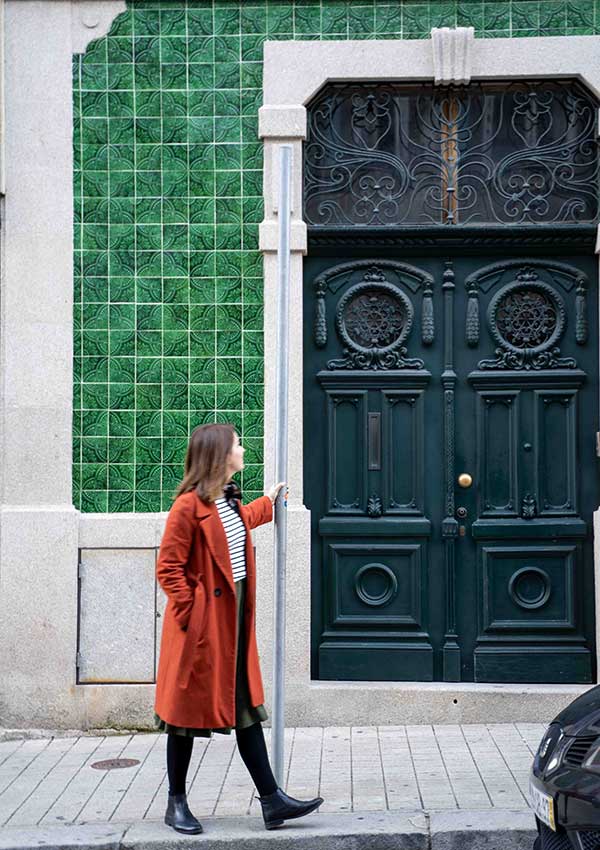

Porto is often a full step cooler and significantly wetter than Lisbon or the south, so your packing strategy should consider this. Layers are key (even in summer), and think practical like the locals – jeans, cosy sweaters, quality waterproof or water-resistant footwear.
Porto does get hot in summer – so pack T-shirts, shorts and light dresses, expecting a heat wave – but outside the summer months, a rain jacket and a sturdy umbrella are non-negotiable.
Read next… 14 common mistakes people make when visiting Portugal
What to wear in Lisbon
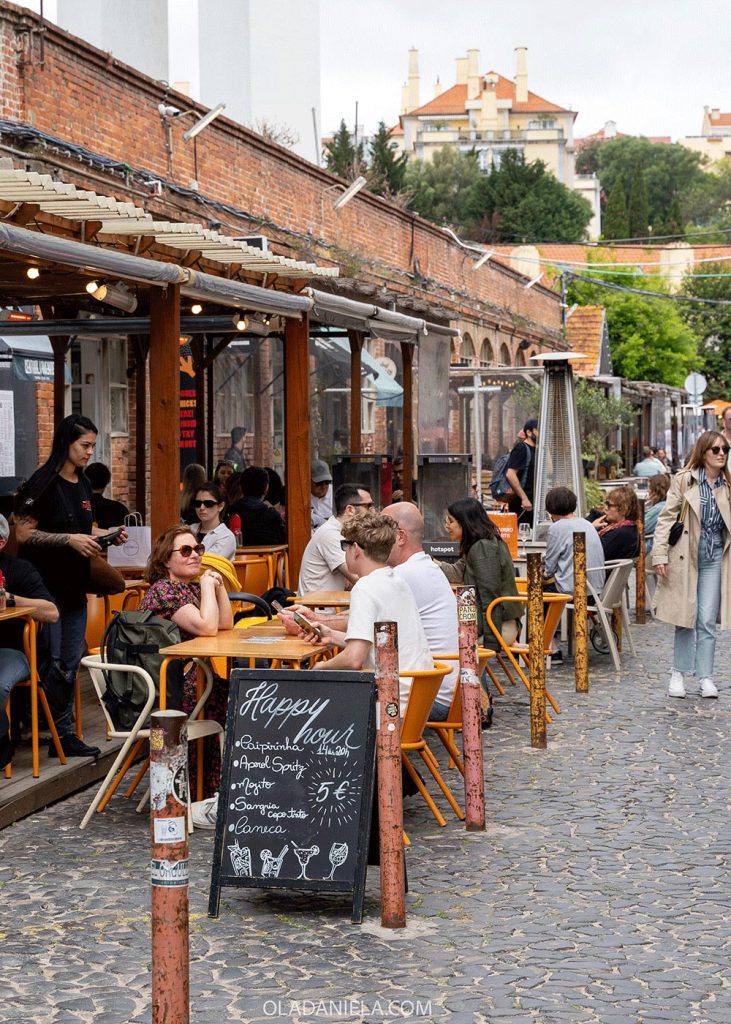
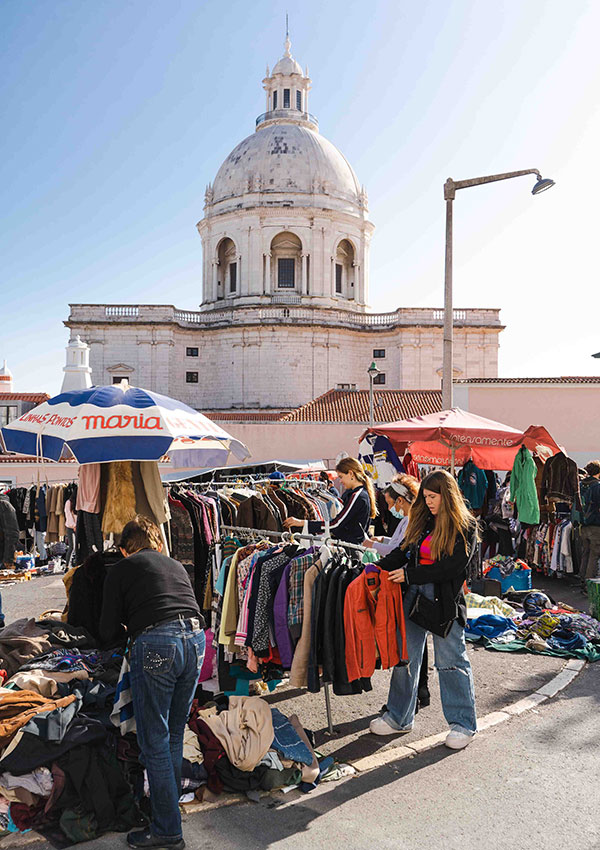
Lisbon is my home, and it might be one of Europe’s most casual capitals. I’d say most locals opt for a chic but simple combo of jeans and a T-shirt or top, though many do dress up a bit with cool jackets and trendy accessories. Most women don’t wear heels, so that means funky sneakers that give an urban edge to any look do dia (outfit of the day). It’s rare to see people flashing designer goods or bags – a chic vintage leather jacket will earn you more street cred.
Always carry a light jacket or linen shirt in the evenings (for me, the only exception to this rule is when the high of the day was over 32°C (90°F)). Lisbon can be super windy (especially in May), so I avoid short, billowing skirts or dresses.
What to wear in the Algarve
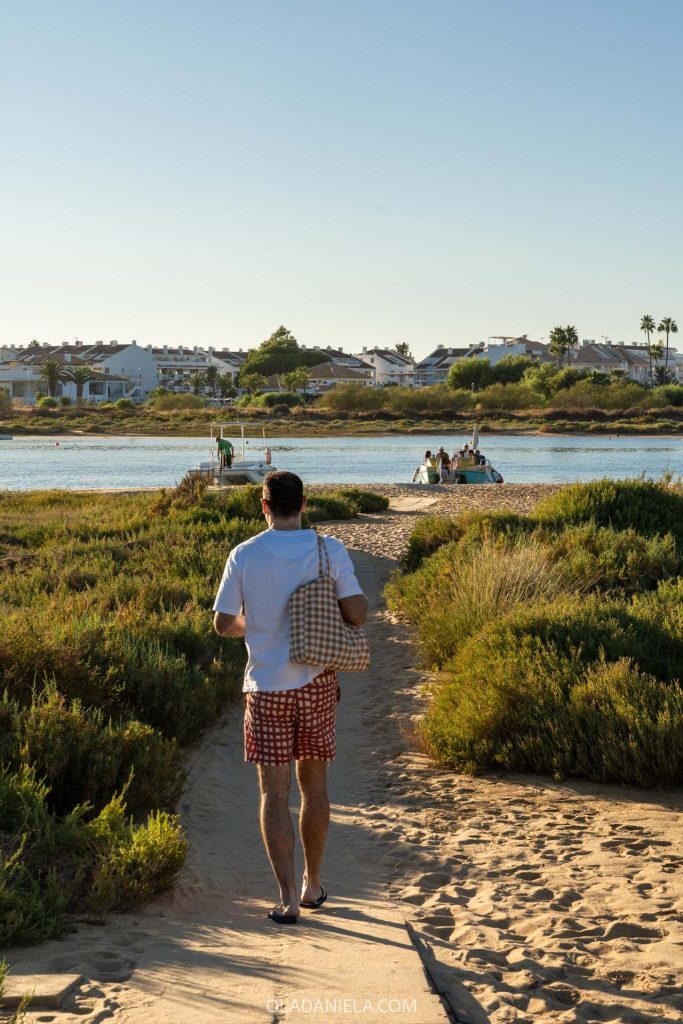
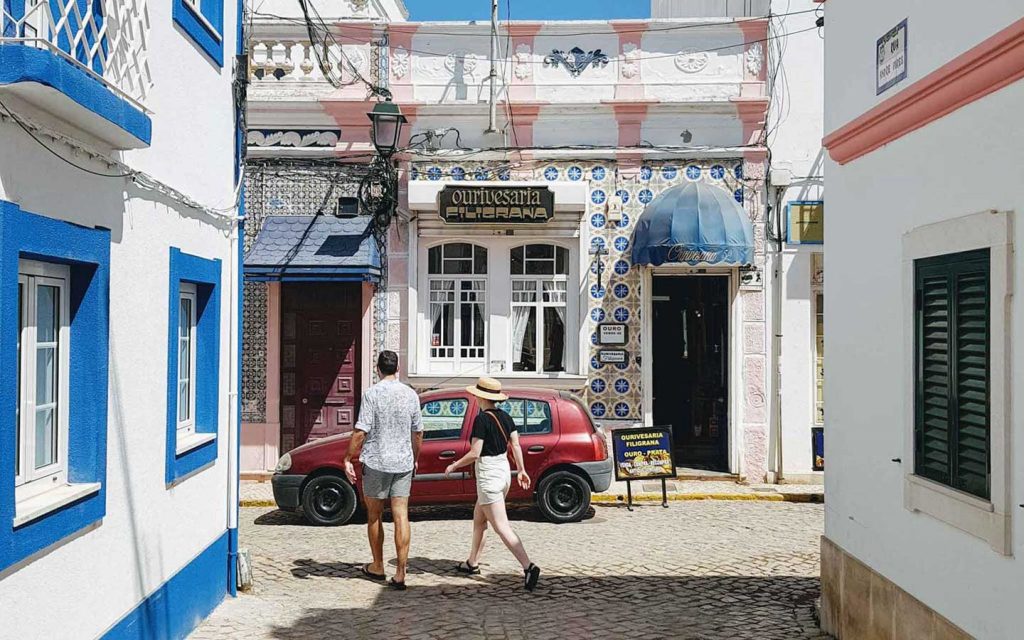
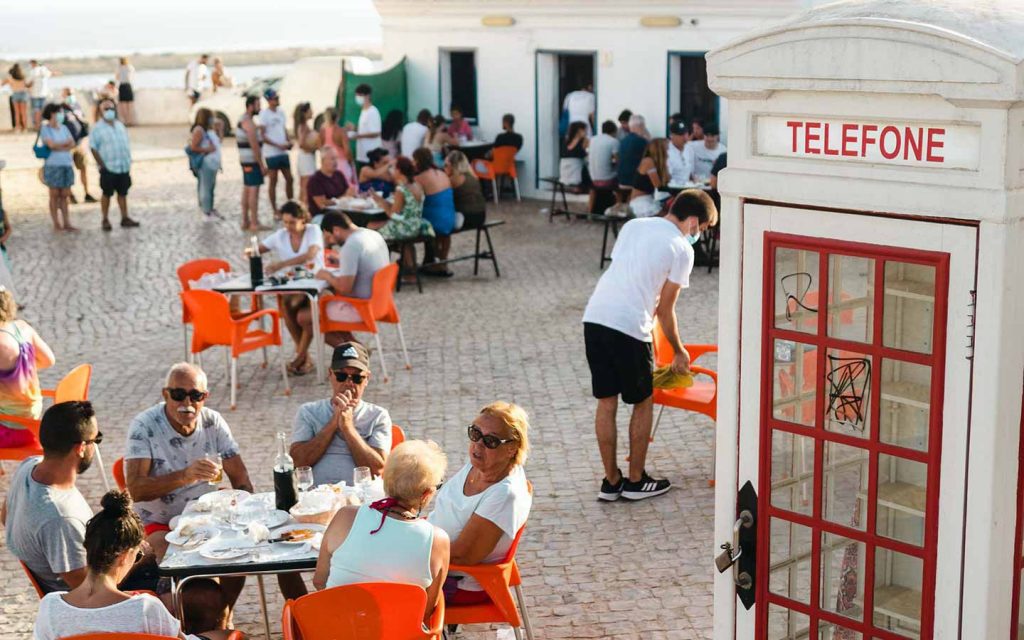
The Algarve is a region, not a singular place – think of it as a handful of villages, towns and small coastal cities. And, as with any beach town, the vibe is relaxed, resort-style. Winter is super mild, and summer is mostly consistent – ideal for beach days and al fresco evenings. The atmosphere is holiday-vibe – flowy sundresses, shorts, flip flops.
Make sure to pack sneakers or proper sandals for exploring towns like Lagos or Tavira – you don’t want to stub your toes on cobblestones. Evenings are generally pleasant, but still pack a light denim jacket or sweater. Some areas of the Algarve are super luxe and offer plenty of Michelin dining – but if that’s your vibe, dress to match.
The most important rule: pack shoes with grip
Portugal is one of the safest countries to visit in the world, but its streets are the most dangerous. We’re not talking street crime – we’re talking shiny, slippery cobblestones (though do keep an eye out for pickpockets in touristy areas too). Part of Portugal’s cultural heritage is the calçada portuguesa. Many footpaths and squares are made of small white stones that, combined with the hilly streets of Lisbon and Porto, can send you to your knees in a flash.
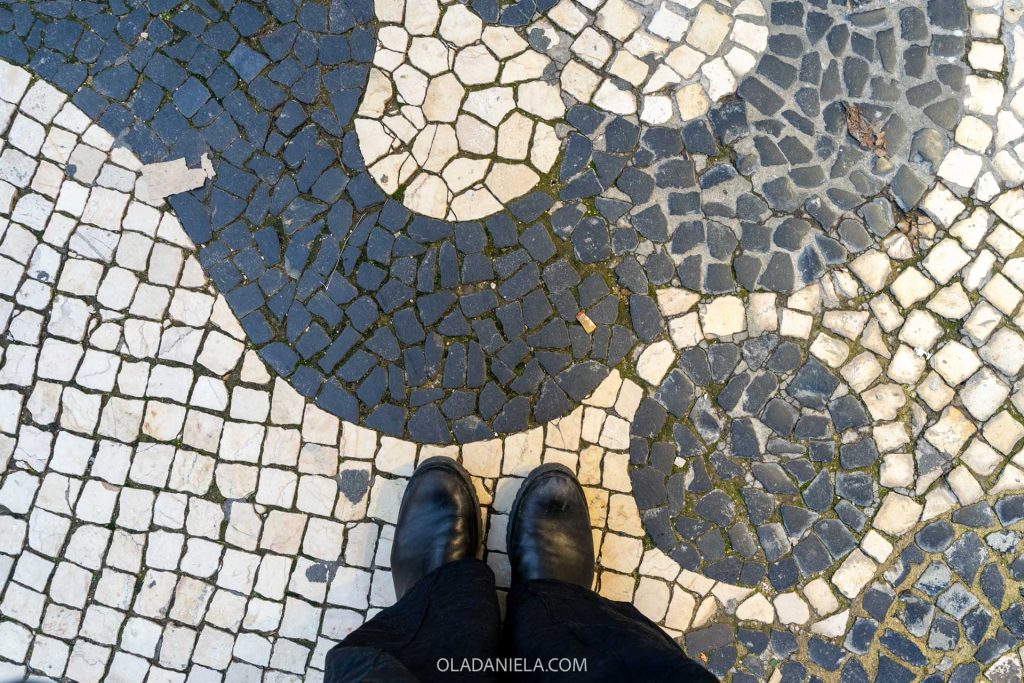
Forget anything with a heel and focus on shoes that have a good grip. Most locals will wear sneakers, boots, Birkenstocks, ballet flats or sandals that have a decent rubber sole. If you want heels for a fancy dinner out, pack at your own peril.
Recommended shoes: Sneakers, sturdy boots, sandals/Birkenstocks with a rubber sole.
Avoid: High heels, smooth-soled dress shoes, thin-soled ballet flats, shoes with smooth leather soles. Consider having extra grip added by a cobbler, if you must.
Packing for different seasons and destinations in Portugal


Spring in the northern interior is very different to spring on the southern Algarve coastline. While Portugal might be a small country, it has dozens of microclimates and great temperature variations, depending on where you visit.
I live in Lisbon, and it’s a good central point – with Porto about a 3-hour drive north, and the Algarve coast a similar distance south – so if I’m speaking generally, I’m talking about Lisbon’s climate. Assume the southern Algarve coast will be a fraction warmer or milder, and that Porto will be a full step cooler.
Those three top Portuguese destinations are all coastal, and the ocean affects the weather. If you’re heading to the interior – Douro Valley, Alentejo, Serra da Estrela – expect hotter summers and cooler winters.
What to pack for Portugal: month-by-month guide
Within each season, there’s too much variation in temperature and weather, so let’s dive into what to pack and wear for your trip to Portugal, month-by-month. Take a look at this quick table, then read the deep-dive about each month below.
| Months | Typical weather vibe (Lisbon) | Average high temp (Lisbon) | Key items to pack |
| January & February | Cold, damp, wet, brisk days, but sunny, clear days are possible. Expect little heating indoors. | 14°C / 57°F | Woollen coat, waterproof boots, warm sweaters, scarf/beanie. |
| March & April | Unpredictable shoulder season, but beautiful for hiking with wildflowers. | 19-21°C / 66-70°F | Light waterproof jacket, sweater, umbrella, jeans, sundress. |
| May & June | Warm, sunny, dry days. May is cool and windy, June is a party. | 22-27°C / 72-81°F | T-shirts and shirts, light jacket and cardigan, swimwear, sun hat. |
| July & August | Hot, dry, peak summer season. Beaches are rammed; inland is scorching. Coastal evenings are cool. | 27-30°C / 81-86°F | Light, breathable fabrics (linen/cotton), swimwear, high-SPF sunscreen, light sweater or layer. |
| September & October | Summer extends into September (warmest ocean). Autumn kicks in mid/late October. | 24-30°C / 75-86°F (Sept) | Layers for the autumn transition, dresses, light jacket, umbrella. |
| November & December | Shorter days with increasing rain. São Martinho brings a warm spell in Nov. | 14-19°C / 57-66°F | Warm layers, thicker coat and sweaters, waterproof shoes. Winter accessories for December. |
January and February: What to pack for Portugal
Average temperatures: Highs around 9-10°C / 48-50°F (in Lisbon, that’s more like 14°C / 57°F). Lows can drop below 0°C / 32°F inland.

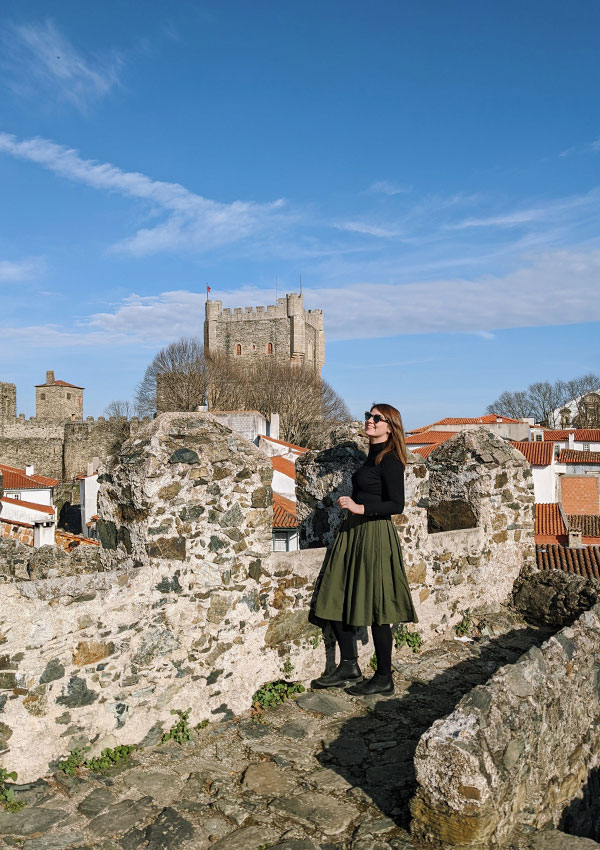
What to expect
This is the low season when Portugal receives the most rainfall. The cold here feels damp and penetrating, thanks to our ugly friend, humidity. Indoor heating is limited in many shops and cafés, so dress ready for cool days inside and out. That said, January and February often offer bright, crisp blue-sky days. I’ve enjoyed January festivals under clear skies, and spent a four-day carnival celebration in the deep North without a drop of rain. Still, with rain and grey skies a real possibility, you’re rolling the dice with the weather.
What to wear in winter in Portugal
Layers, layers, layers!
- Think jeans and long-sleeve shirts.
- Pack thick, warm sweaters.
- A wool or winter coat is essential.
- Don’t skip accessories like a scarf, gloves and a beanie or beret.
- With a chance of rain, waterproof boots will be better than sneakers.
- It’s worth having a waterproof coat or bringing an umbrella.
Read next….Complete guide to winter in Portugal
March and April: What to pack for Portugal
Average temperatures: Highs range from 12-19 °C (54-66 °F). Nights dip to around 7-12 °C (45-54 °F). Lisbon and the Algarve have slightly warmer averages, tickling 20-21°C (68-70°F) some days.


What to expect
This is shoulder-season weather – often pleasant, sometimes not. If Portugal doesn’t get enough rainfall in January and February, no doubt it will arrive in March or April. There’s a saying: em abril, águas mil – which literally means “in April, a thousand waters” a.k.a it will rain, lots. April is my birthday – and I love low-key celebrations like a picnic in the park, but it’s impossible to guarantee sunny and dry weather, so I usually have to book a restaurant or wait to see the radar for last-minute outdoor fun.
What to pack for March and April
- Layering is key – think jeans or chinos, long-sleeve shirts, and a sweater or light fleece.
- Pack a light jacket or windbreaker to handle morning chill or coastal breezes.
- In April, I’d throw a dress or skirt in the suitcase – sunny days with 21°C (70°F) can be delightful.
- A midweight, waterproof coat would be ideal for evenings.
- Rain gear – if not a coat, bring an umbrella.
- Pack shoes that can handle wet, slippery footpaths – boots or sneakers.
Read next… 9 places to visit in Portugal this spring
May and June: What to pack for Portugal
Average temperatures: Highs range from 21-27°C (70-81°F), with nights cooling to 11-16°C (52-61°F). Lisbon usually sits around 22-25°C (72-77°F), while the Algarve is often a touch warmer. Inland areas can already nudge towards 30°C (86°F) by late June.
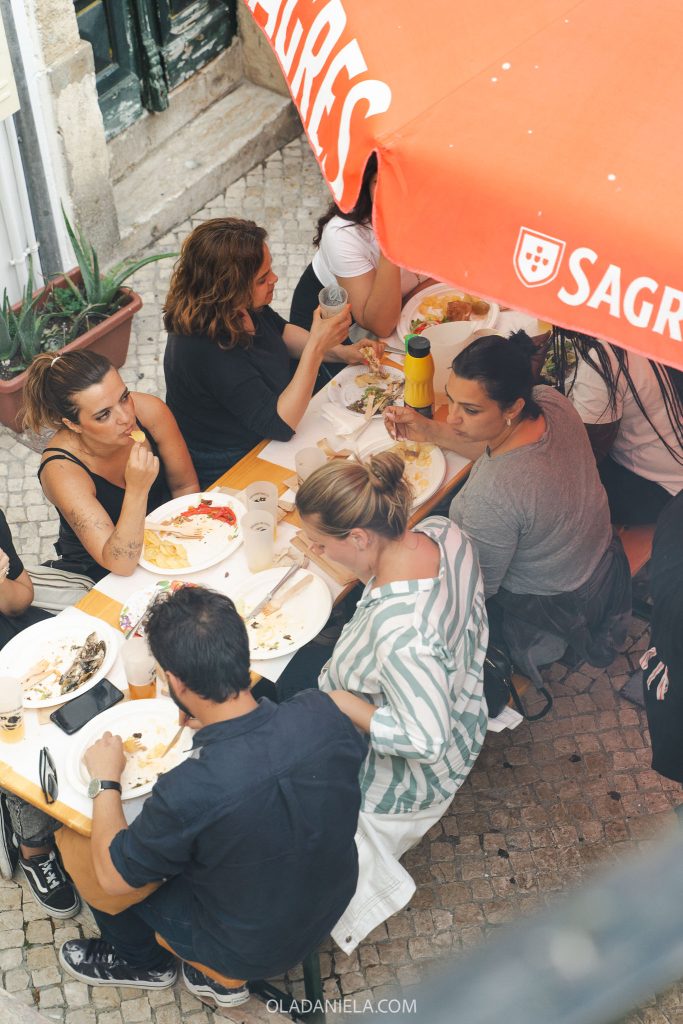

What to expect
May is when Portugal starts to warm up with plenty of sunshine and wildflowers. It’s a good time to visit before the summer crowds or to go hiking along the Costa Vicentina. In June, the days get longer with little chance of rain – and while you might be rocking summer clothing, jackets are still essential for after sunset. Juen has religious dates that bring big parties to Lisbon, Porto and other towns.
What to pack in May and June
- Light, breathable clothing – go for cotton or linen shirts, flowy skirts, or chinos.
- A sweater or cardigan for evenings is essential.
- If you’re by the coast, you might like a windbreaker or heavier jacket.
- Bring sun protection – sunglasses, sunscreen and a hat.
- Swimwear for beach days – just arrive knowing the Atlantic is always cold.
- Comfortable sandals or sneakers for walking in cities.
Read next… Sardines & pimba: Your guide to Lisbon’s Santo António Festival
July and August: What to pack for Portugal
Average temperatures: Highs average 28-35°C (82-95°F), with the Algarve and interior regions often hitting 40°C (104°F) during heatwaves. Coastal cities like Lisbon and Porto tend to be a bit cooler, usually between 27-30 °C (81-86°F). Nights stay mild, ranging from 16-20°C (61-68°F) depending on the region. The Atlantic Ocean keeps coastal destinations cool, especially in the evenings.
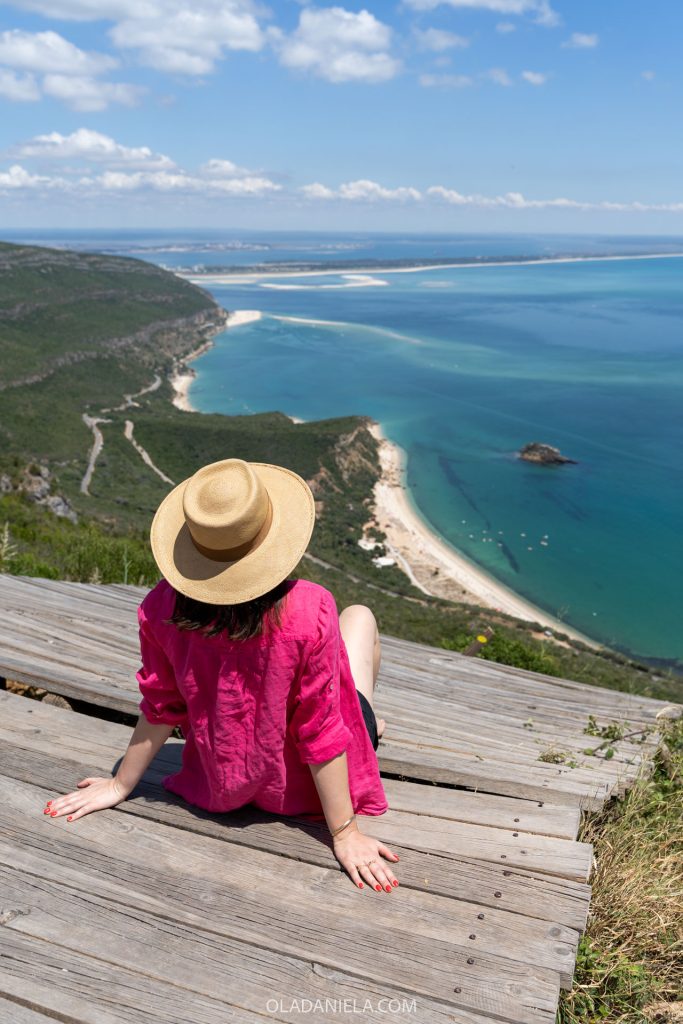
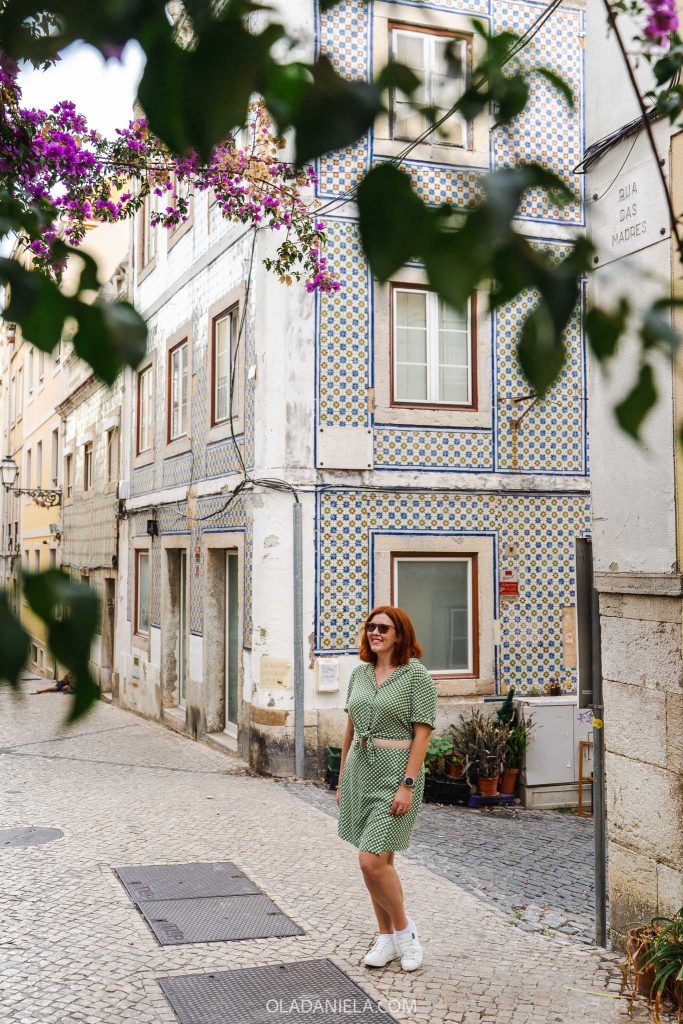
What to expect
This is peak summer – hot, dry and busy with a chance of heatwaves. But it’s also the best time for the beach, non-stop summer events and festivals, and long summer evenings where *sometimes* you don’t need a jacket. Rain is almost nonexistent – so forget bringing an umbrella. Coastal cities like Lisbon and Porto buzz with tourists, while the Algarve swells with beachgoers and Portuguese who migrate south for the August holidays.
My honest recommendation is to avoid visiting Europe from late July until the end of August. During this time, school students are off, and local businesses often shut shop forcing employees to take 2-4 weeks off. That means peak season prices in coastal destinations, and if you’re visiting the city, you’ll find many family-run businesses closed.
If you head inland, areas like the Alentejo will feel scorching in the middle of the day. You’ll likely only see locals out early mornings or evenings – so mimic them for your sightseeing.
What to pack for summer in Portugal
- Light, breathable fabrics – like linen or cotton
- Summer clothing like dresses, skirts or shorts and tank tops or T-shirts
- Portuguese men will wear shorts in summer, but if you go somewhere fancy in the evening, wear chinos.
- Swimwear and a cover-up for the beach
- Sun protection is non-negotiable – high-SPF sunscreen, sunglasses and a hat. The sun here is quite strong, don’t underestimate it!
- A light cardigan or long sleeve for evenings – essential
- Comfortable sandals for day-to-day; sneakers for exploring cobbled streets or hiking
- A refillable water bottle – cities have public fountains, or I often ask a café to refill mine and have never been refused.
Read next… 9 best summer destinations in Portugal
September and October: What to pack for Portugal
Average temperatures: September still feels like summer, with highs of 24-30°C (75-86 °F) and warm evenings around 16-19°C (61-66°F). By October, things cool to highs of 19-24°C (66-75°F) and lows of 12-15°C (54-59°F). A chance of rain makes the days a little humid in Lisbon. This time of year, the Algarve remains pleasantly warm, while northern cities like Porto and inland regions start to feel crisp by late October.


What to expect
September is one of Portugal’s best months – early in the month is when I like to take a summer vacation to the Algarve coast, where humid evening weather feels more Mediterranean than Atlantic. This time of year, the sea is at its warmest, and the weather is still reliably sunny – though the chance of rain kicks in. The kids are back at school, so crowds are thinner, but it’s still busy and buzzy.
By October, autumn is here – shorter days and a chance of rain. I’m based in Lisbon, and in 2025, I found the whole month to be warm, warm, warm – thanks to humidity. We still had a few sunny beach days that hit 27°C (80.6°F), and the evenings were T-shirt weather, which rarely happens in summer.
What to pack for September and October
In September, think light clothing, swimwear, sun protection and a light sweater or cardigan. In October, add jeans, trousers and a light jacket – ideally waterproof. You might start the day with a sweater, be in just a T-shirt at noon, then need that layer again after sunset.
- T-shirts with a light linen shirt to layer
- Shorts or a skirt for warmer days
- Jeans or chinos for later in the season
- Dresses that you can layer a denim jacket over
- Umbrella for autumn showers
- Layers to add for cooler evenings
- Comfortable shoes for city walking and countryside exploring
- In late October, consider a light scarf – gloves and a beanie would be overkill.
November and December in Portugal
Average temperatures: November sees highs of 14-19°C (57-66°F) with lows of 8-12°C (46-54°F). By December, highs drop to 11-16°C (52-61°F) and lows hover around 6-9°C (43-48°F). As you’d expect, Lisbon and the Algarve are milder, while Porto and the North are cooler and wetter. Inland areas can feel much colder with frosty mornings.

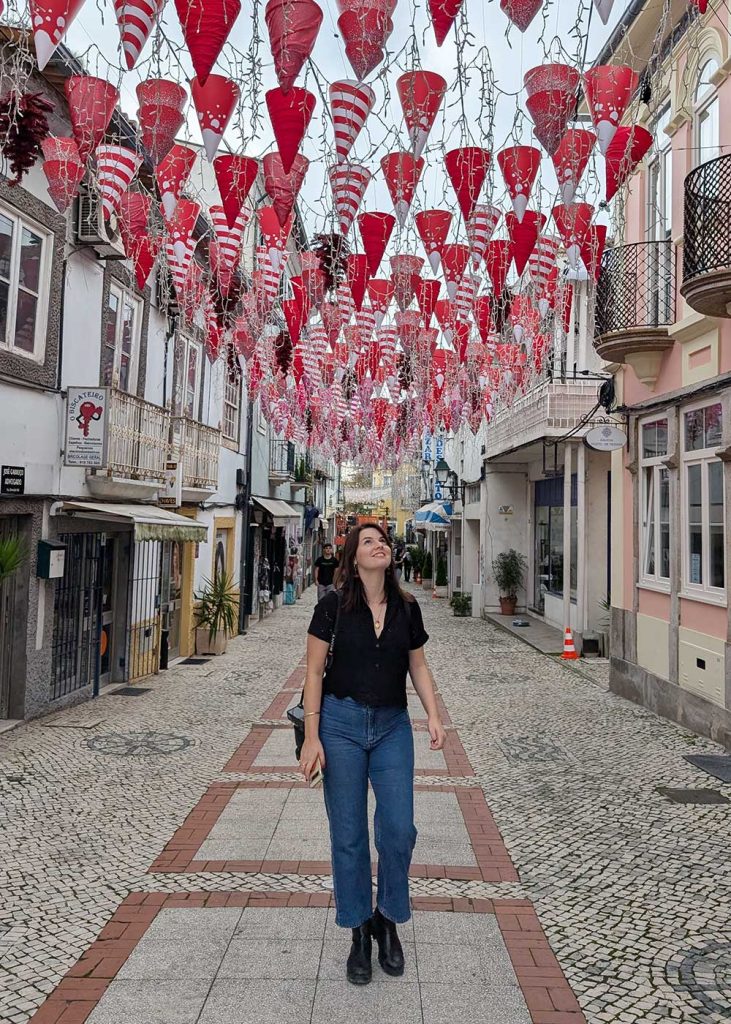
What to expect
November and December are when winter is truly on its way. The days are getting shorter, rain is increasingly common, and as the days cool off, the humidity turns from an added layer of warmth to a damp chill. Still, I think if you plan to visit off-season, November and December beat January and February, hands down.
In November, Saint Martin’s summer (São Martinho) falls on November 11, usually bringing a week of sunny, gorgeous weather. Towards the end of the month, festive cheer is in full swing with lights in towns and cities and Christmas markets. I’ve celebrated Christmas here half a dozen times and find the day hovers around 19°C (66.2°F), which is warm enough to sit around outdoors in a dress with tights and a sweater.
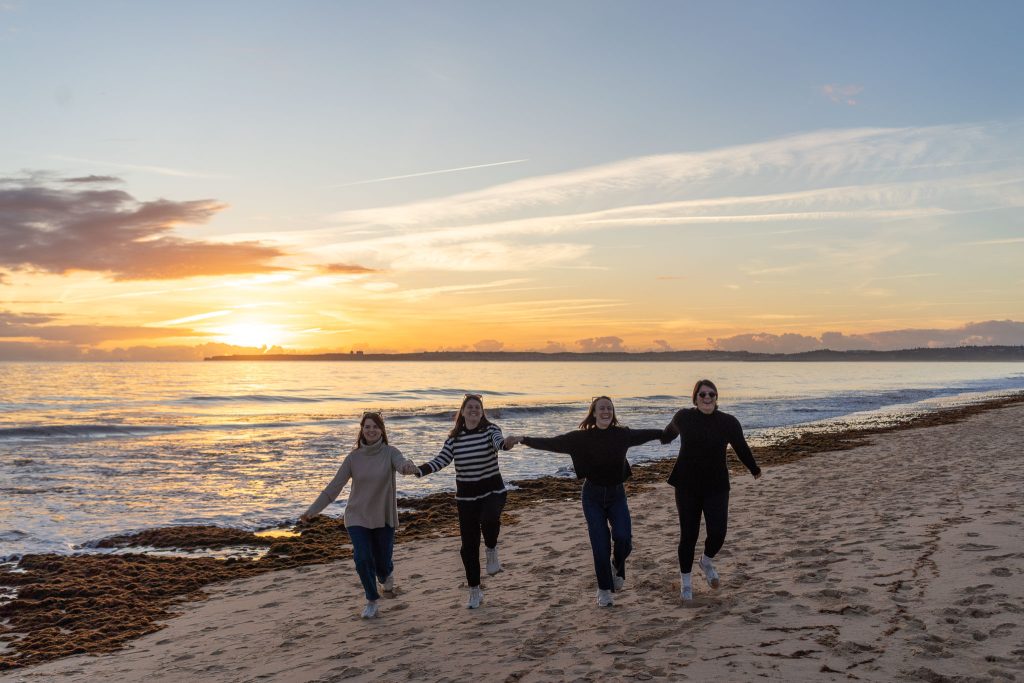
What to pack: November and December in Portugal
- Warm layers! Think jeans, long-sleeve tops, thicker sweaters
- A warm, wool or waterproof coat
- Expect rainy days – bring a waterproof jacket or umbrella
- Bring winter accessories – scarf, gloves, beanie
- Waterproof boots or sturdy sneakers for wet, slippery cobblestones
- Some sunny days are warm, so consider lighter layers that you might wear in autumn rather than winter.
Read next… 10 perfect days in Portugal: A fast-paced classic itinerary
Basic packing list for Portugal
This list is designed for 4-7 days in Portugal for all genders, so take from it what you need or desire. It’s designed as a starting point and inspiration to help you pack – and I’ve created a printable, downloadable version that you can grab for free if you sign up for my newsletter (below!).
If you have any specific questions, drop a comment on this post below.
| General clothing | 3-5 T-shirts 1-2 nice shirts or tops 1-2 pants or jeans Light jacket or sweater (yes, even in summer) |
| May-Oct add these extras | 1-3 shorts (or a skirt) 1-3 dresses Swimsuit Towel |
| Nov-Apr add these extras | 1x lighter coat (trench, leather etc) 2x sweaters 1-2 long-sleeve T-shirts Rain jacket or umbrella |
| Dec-Feb add these extras | Thick, warm coat (wool or waterproof) Scarf Gloves |
| Shoes | Focus on footwear with good grip – skip high heels 1x sandal or flipflops for summer 1x boots for winter 1x sneakers (year-round) |
| Accessories | Hat – for sun or cold Sunglasses – needed even in winter Crossbody bag or day pack |
| Random extras | Toiletries Sunscreen Exercise gear Jewellery |
| Essentials | Passport ETIAS pass (will become mandatory from the last quarter of 2026) Power adapter eSIM – I like Airalo Reusable drink bottle Camera Phone charger Headphones Tote bag |
What NOT to pack for Portugal
Just to reiterate what I’ve said above. If you can avoid it, don’t pack…
- High heels – the cobblestones are a genuine ankle risk.
- Activewear for sightseeing – save leggings and gym clothes for the gym.
- Short, floaty skirts/dresses – coastal winds can be strong, year-round
And remember, Portugal is fairly casual and relaxed, so designer bags and labels don’t impress.
FAQs about what to wear in Portugal
Do locals in Portugal wear shorts?
Yes. Obviously, women can get away with shorts more, but Portuguese men do wear shorts in the summer months. It’s too hot not to! In the evening, if it’s cool enough, switch to chinos though.
Is there a dress code for tourists in Portugal?
Definitely not. I’d recommend not wearing activewear out exploring in any European city. In Portugal, no one will say anything, but it’s not like in the United States. You’ll find religious sites are not as strict as in some other countries, but it is respectful to cover your shoulders and knees.
Is it cold inside houses in Portugal?
Yep, in winter it is freezing cold. Many older homes are poorly insulated with single-pane windows. Electricity is super expensive, so most people won’t turn the heating on unless absolutely needed. And by heating, I mean a plug-in heater – few houses have built-in heating. Of course, modern hotels will be different – but if you’re travelling on the cheap, layer up.
What type of plug does Portugal use?
Standard European plugs – plug Type C (two round pins) and Type F (two round pins with grounding clips). The standard voltage is 230V.
That’s my guide covering what to pack for Portugal. If you’re missing something – don’t stress, you can buy anything you forget or need here too.
Keep reading….






